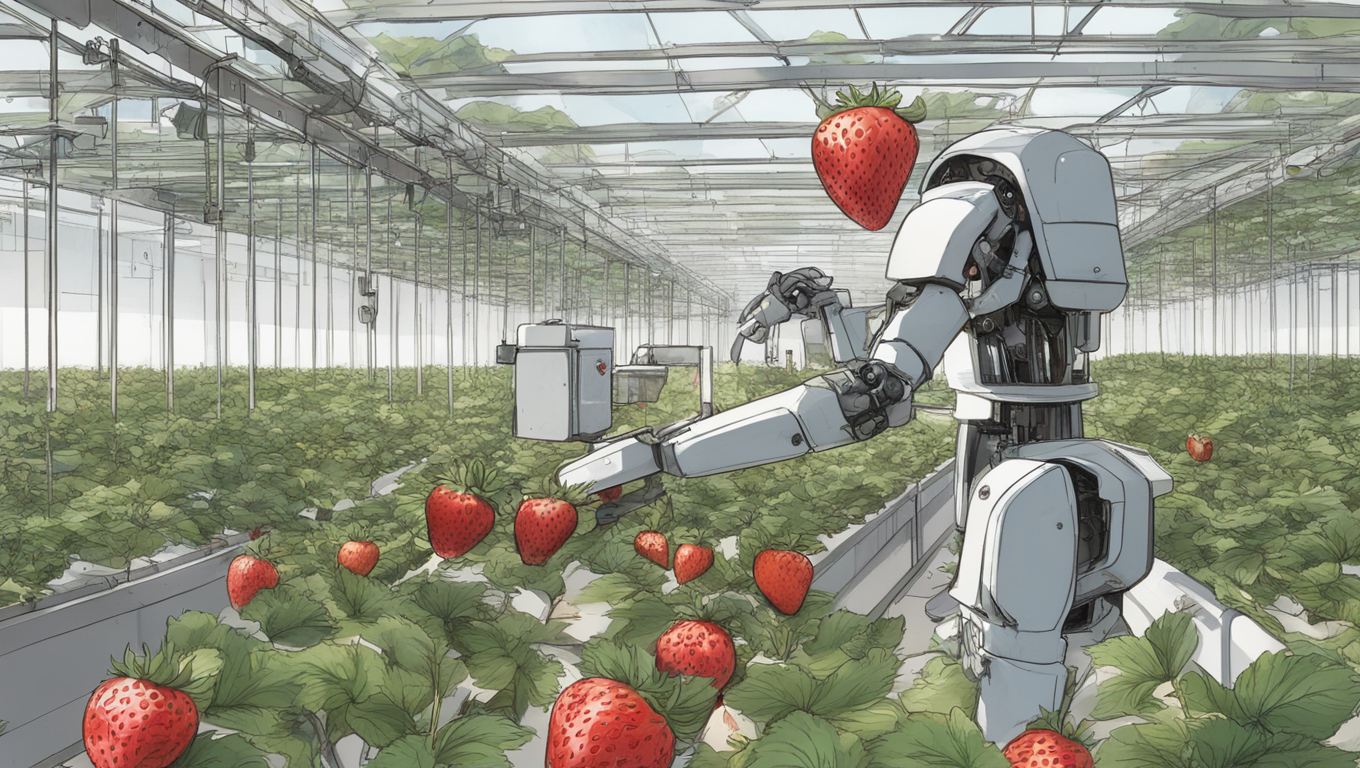In the heart of Japan, a quiet revolution is underway in the agriculture industry. As the country grapples with severe manpower shortages, farmers are turning to artificial intelligence (AI) and robotics to tackle labor-intensive tasks and ensure the production of high-quality agricultural products. This trend towards smart agriculture is not only helping to alleviate the vast manpower scarcity but also has the potential to reshape the future of farming.
One innovative solution comes in the form of AI-equipped robots that can navigate through greenhouses, carefully selecting and harvesting the ripest crops. At a farm in Hanyu, Saitama Prefecture, an AI robot smoothly glides through rows of cucumber plants, identifying the fully matured cucumbers and gently cutting them off without damaging the stems. Takeshi Yoshida, the head of the farm, expressed his initial concern about the robot’s precision but was pleased to find that it was able to perform the task accurately. The robot, developed by startup Agrist Inc, uses a camera and AI algorithms to determine the optimal time for harvest.
Agrist, founded in 2019 in Miyazaki, specializes in developing robots for agriculture. The company aims to increase the adoption of its automated cucumber harvester among farms in Japan. The AI robot captures images of the cucumbers, analyzes their size and maturity, and cuts off one to three cucumbers every two minutes, placing them in a case. The precision and efficiency of the robot have impressed farmers who are struggling to find enough labor. As word spreads about the success of these AI-powered robots, other farms are expected to follow suit and embrace this technological advancement.
Another Japanese agricultural venture company, Inaho Inc, has entered the realm of AI-equipped robots by leasing one to a farm in the Netherlands. This robot specializes in picking cherry tomatoes, using AI to identify ripe and easily harvestable tomatoes before delicately plucking them from the plant. Harvesting robots face a complex challenge when dealing with tomatoes, as the fruits bunch around the leaves and stems. Inaho has overcome this obstacle by developing a robot that picks 40% of matured tomatoes at night, leaving the rest to be harvested manually during the daytime. The company not only aims to expand the use of this technology in the Netherlands but also hopes to export its smart agriculture solutions worldwide.
While these robots currently mainly operate in greenhouse environments, Takanori Fukao, a professor of robotics at the University of Tokyo, suggests that their use will likely extend to open-field cultivation in the future. However, this transition may require farmers to plan the placement of crops in advance, enabling the robots to navigate and harvest effectively.
As Japan pioneers the integration of AI and robotics in agriculture, it not only addresses the pressing issue of labor shortages but also opens up new opportunities for the industry. The ability to automate labor-intensive tasks and ensure the quality and efficiency of crop production has the potential to revolutionize the way farms operate around the world. With ongoing advancements in AI and robotics, the day may come when farmers rely primarily on robotic labor, transforming the landscape of agriculture as we know it.





Use the share button below if you liked it.